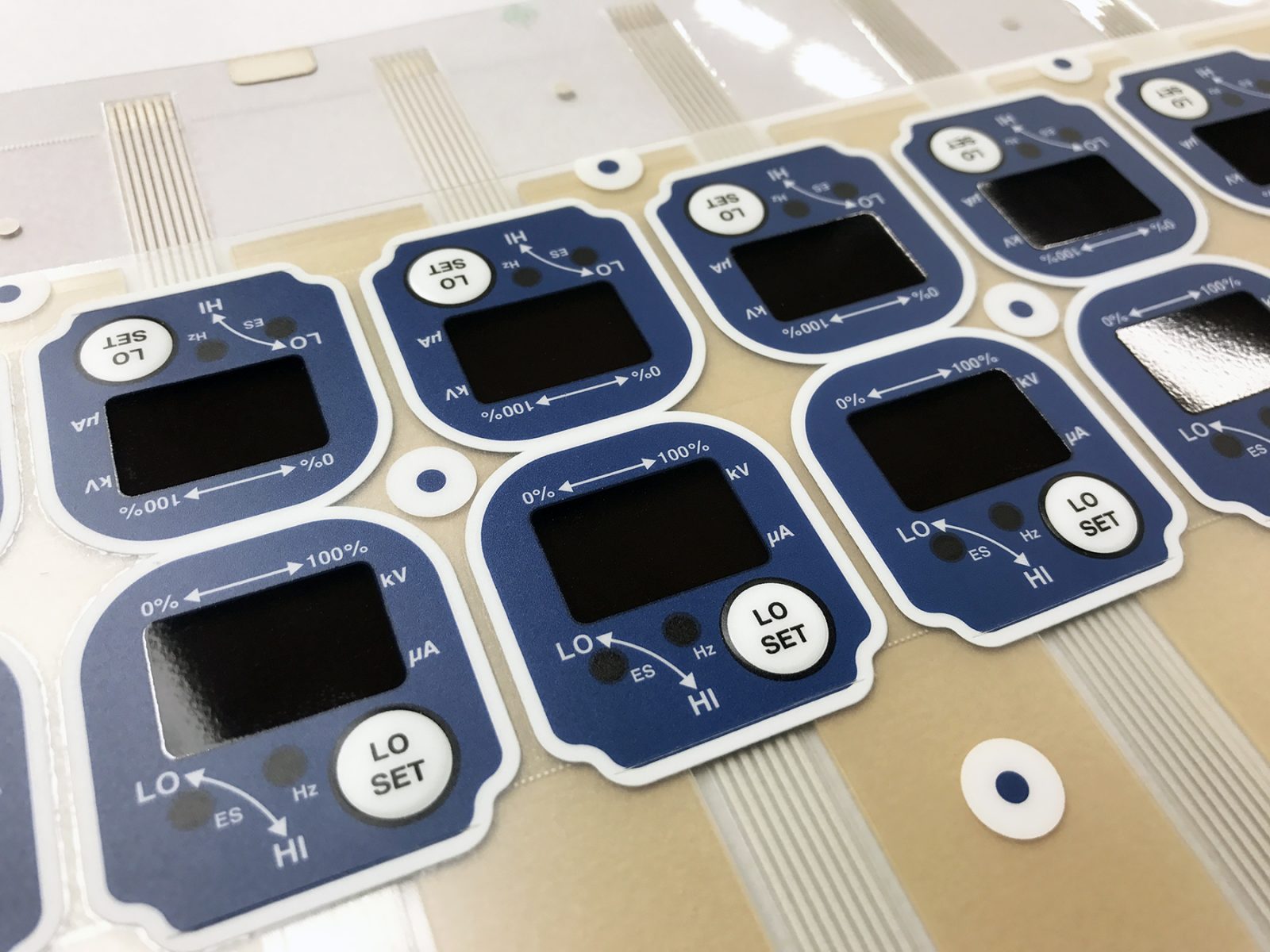The Function of a Membrane Switch in Modern Touch Interfaces and Controls
The Function of a Membrane Switch in Modern Touch Interfaces and Controls
Blog Article
Comprehending the Capability of Membrane Switches Over for Customer Interface Devices
The functionality of membrane layer switches over stands for a significant innovation in interface style, integrating effectiveness with aesthetic flexibility. These buttons operate via a multi-layered framework that translates individual communications into electric signals, permitting for both small formats and resilience against environmental elements. As industries significantly prioritize individual experience, comprehending the subtleties of membrane layer button innovation ends up being important. What ramifications do these innovations hold for future applications, and how might they redefine user communications throughout various gadgets?
What Are Membrane Layer Switches?
Membrane layer buttons are innovative interface gadgets that help with individual interaction with electronic tools. These functional parts are composed of several layers, including a graphic overlay, spacer, and a printed circuit layer. The design permits a seamless integration right into numerous digital devices, boosting both the aesthetic and functional facets of interface.
Membrane buttons are typically employed in a vast array of applications, from family appliances to industrial machinery and clinical gadgets. Their building typically includes a thin profile, making them an excellent selection for portable designs. The tactile responses given by these buttons can be engineered to satisfy specific user choices, ensuring reliable interaction between the customer and the tool.
Toughness is an additional considerable benefit of membrane buttons, as they are resistant to dust, dampness, and chemicals, which boosts their life expectancy sought after environments. Furthermore, these switches can be personalized in regards to shape, dimension, and visuals style, enabling branding and user-specific attributes. In general, membrane changes represent a practical option for improving user experience in digital tools, integrating functionality with visual appeal in a reliable way.
Just How Membrane Changes Job
Operating on a straightforward concept, membrane changes make use of a split building to sign up individual input effectively. Each button consists of several layers, consisting of a printed circuit layer, a spacer layer, and a top visuals layer, which are made to collaborate perfectly. When an individual presses the leading layer, it compresses the spacer layer, bringing the conductive aspects of the circuit layer right into call with each other.
This call creates a closed circuit, signifying the device to perform a certain feature. The design enables for various setups, consisting of responsive responses, which can improve the individual experience by supplying a physical experience upon activation. The materials utilized in membrane switches often include adaptable substratums, such as polyester or polycarbonate, which ensure sturdiness and durability against deterioration.

Trick Advantages of Membrane Switches

One more significant benefit is their compactness. Membrane layer switches are slim and lightweight, which makes it possible for manufacturers to conserve area in their tools without compromising functionality. This attribute is especially beneficial in applications where weight and volume are critical considerations.
In addition, membrane buttons are resistant to dust, dampness, and chemicals, improving their durability. This durability expands their life expectancy and lowers the need for constant replacements, leading to price savings in time.
In addition, the tactile feedback supplied by membrane layer switches can be enhanced to enhance individual communication. They can include functions such as elevated buttons or distinct clicks, improving functionality and customer experience.
Applications Across Industries
Individual user interface devices using membrane layer buttons prevail in a large selection of industries, showcasing their adaptability and performance. Membrane Switch. In the clinical sector, membrane buttons are integral to devices such as diagnostic devices Extra resources and individual tracking systems, where their toughness and ease of cleansing are vital for preserving health standards. Similarly, in the vehicle sector, these buttons are employed in dashboard controls and infotainment systems, offering a streamlined and modern-day interface for individuals.
Furthermore, the consumer electronics industry gain from membrane buttons in devices and portable gadgets, where compact design and user-friendly interfaces enhance customer experience. Industrial applications additionally leverage membrane layer changes for control panels in machinery and webpage automation systems, emphasizing their effectiveness and resistance to harsh environments.
In the aerospace and protection sectors, membrane layer switches are utilized in cabin controls and devices, where integrity and efficiency under extreme problems are vital. Furthermore, the video gaming industry increasingly includes membrane layer buttons in controllers and arcade devices, adding to an appealing customer experience. On the whole, the convenience of membrane layer switches allows their extensive use throughout many sectors, underscoring their value in modern-day interface style.
Future Patterns in Membrane Switch Technology

Additionally, the use of advanced products, such as polycarbonate and polyester films, is anticipated to rise, offering enhanced durability and resistance to environmental stressors. These products add to the general long life of membrane layer switches, making them suitable for harsher industrial applications.
In addition, the unification of smart innovation, consisting of IoT connection, will certainly allow membrane layer buttons to connect with various other tools and systems, helping with a much more interactive customer experience. This trend aligns with the expanding demand for wise devices across various markets, from health care to consumer electronics.
Lastly, customization choices are anticipated to increase, allowing manufacturers to develop bespoke services tailored to details user requirements and choices. These developments will certainly position membrane buttons as essential parts in the evolution of individual interface innovation.
Verdict
In verdict, membrane layer switches over stand for an essential improvement in interface innovation, offering a trusted and functional remedy for diverse digital applications. Their split building and construction facilitates small design, while features such as responsive comments boost individual communication. The resilience versus environmental elements even more strengthens their utility across several sectors. As advancements in material science and touch sensing modern technologies continue, the functionality and applicability of membrane layer buttons are anticipated to increase, reinforcing their value in modern-day electronic tools.
Report this page